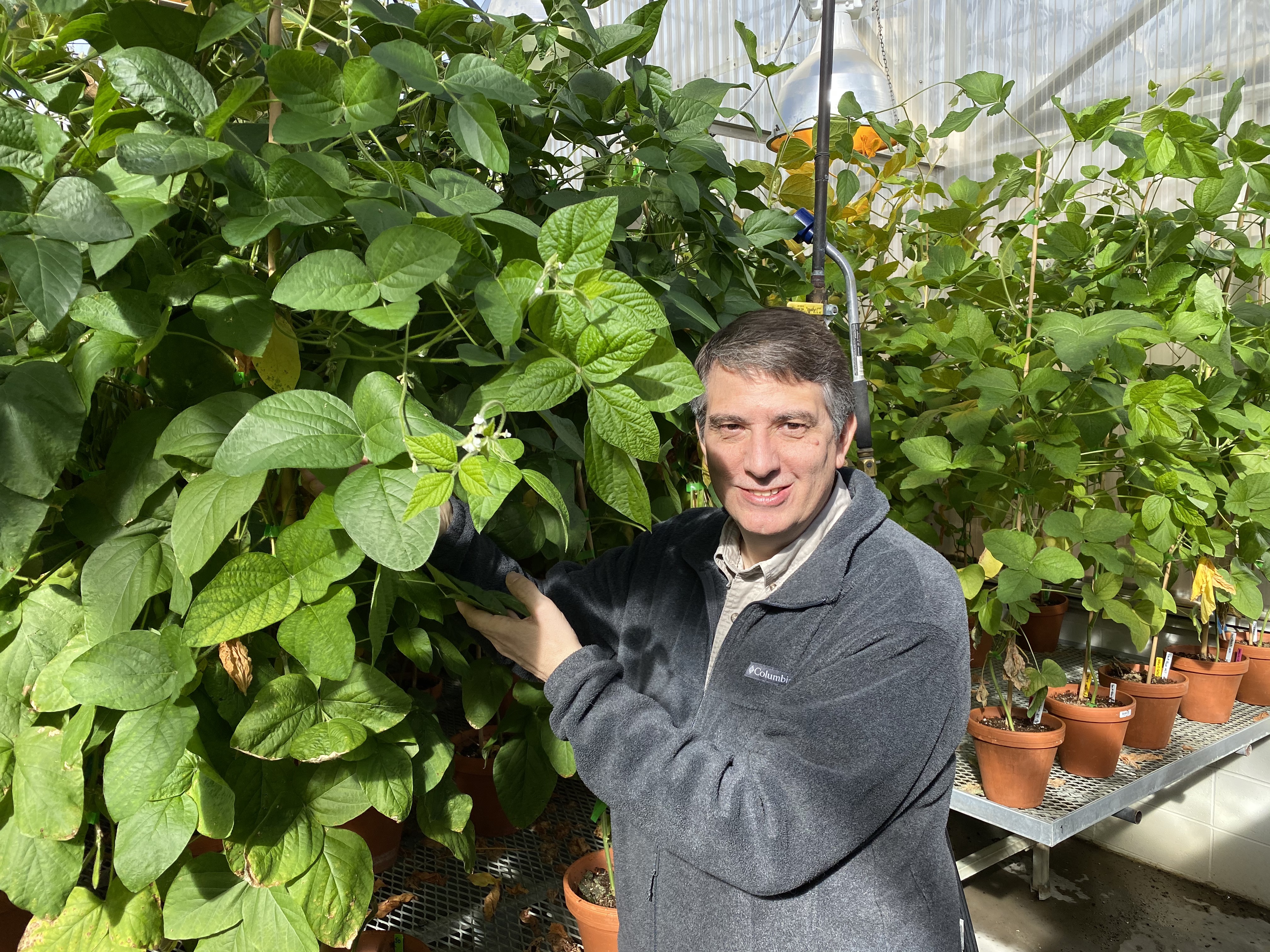
Adding Value to Nebraska Commodity Crops
Using Biotechnology to Advance Production

Farmers in the United States need stability in the markets and larger profit margins when it comes to pricing commodities.
“One way to potentially increase profits for farmers and develop new rural industries is finding value in typical Nebraska commodities, such as soybeans and sorghumby introducing high-value traits,” said Ed Cahoon, director of the Center for Plant Science Innovation at the University of Nebraska-Lincoln.
Adding value to these commodities provides additional financial opportunities for farmers. For instance, Cahoon said keeping this money with farmers, co-ops and other local agricultural businesses allows for more money to stay within the community, boosting economic growth and stability in rural Nebraska.
Cahoon works to increase demand and new market opportunities for locally grown commodities such as sorghum and soybeans by applying biotechnology to to add value to crops such as biofuels, bio-jet fuels, aquaculture, and nutritional products.
Sorghum for Biofuels
Using sorghum for bio-fuel would likely increase profit margins for farmers and allow for an economically viable energy production through production plants within rural Nebraska.
Unlike soybean seeds, sorghum leaves do not hold oil, Cahoon said. Instead, the stalks of the sorghum plant store lignin and cellulose, which help produce ethanol. Cahoon and his team are working to introduce the capacity of sorghum leaves to produce oil as a co-product. These components of the plant are hydrophobic, meaning they do not mix with water, and can be extracted with hexane (a hydrocarbon) for easy separation from the lignocellulosic fraction.Doing so creates a demand for two separate entities of the sorghum crop and, ultimately, increases profit for the producer.
Camelina and Soybeans for Bio-Jet Fuels
Through biotechnology, Cahoon and his team are working to make carbon chains used in the production of bio-jet fuels in the emerging bio-fuel crop camelina. Cahoon said specific chain lengths of carbon allow camelina seed oil to be converted into a kerosene-type fuel that is similar to current petroleum-derived jet fuel Doing so reduces greenhouse gas emissions made through the public transportation of flight. The technology that is being developed in camelina can be transferred to soybeans to generate additional market opportunities.
“Commercial aviation accounts for 5% of the global greenhouse gas emissions,” Cahoon said. “There are estimates that say if nothing is done by 2050, that percentage will double.”
Instead, Cahoon hopes to cut this percentage in half through implementing biofuels into commercial aviation.
By implementing this technology, the process of creating and using the bio-jet fuel becomes more attractive because of its ability to reduce the carbon footprint of air travel.
Soybeans in Aquaculture
With the ever-growing demand for fishfor healthy diets, aquaculture is becoming more prevalent and soybeans are a valuable protein source used to feed both livestock and fish. Cahoon finds ways to make soybeans more suitable for the oil component of aquaculture feed
Take salmon for example. Cahoon has engineered soybeans to make the red astaxanthin pigment, one of the most costly portions of farm-raised salmon feed. By transferring genes that are naturally expressed in the red flowers of Adonis, his team has developed a red soybean oil that can be fed to salmon to make their flesh have a more-appealing color.
“Salmon cannot make the astaxanthin pigment, but instead get it from their diets. The consumer wants the color of salmon flesh to be red and our astaxanthin-rich soybean oil helps deliver this quality,” Cahoon said. “
Cahoon’s lab is also working to introduce genes to soybean to make heart-healthy fish oil-type fatty acids that are another part of aquaculture feed rations. This research is expected to lead to higher premiums and new markets in the aquaculture industry for Nebraska soybean farmers.
Soybeans for Vitamins and Antioxidants
Cahoon also sees the demand for renewable products in vitamins and cosmetics consumed daily. Soybean oil is a rich sourcesource of E that is not only an essential nutrient but also an important antioxidant for food processing and cosmetics. With these being a such fast-growing markets, Cahoon sees a growing demand for these products.
“Soybeans are already a good source of vitamin E, whichcomprises one of the world’s biggest nutraceutical markets ,” Cahoon said.
Cahoon and his team are activelyfinding new ways to develop soybeans with increased content and higher-value forms of vitamin E antioxidants.
For more information on other projects happening in the Center for Plant Science Innovation, please visit unl.edu/psi.